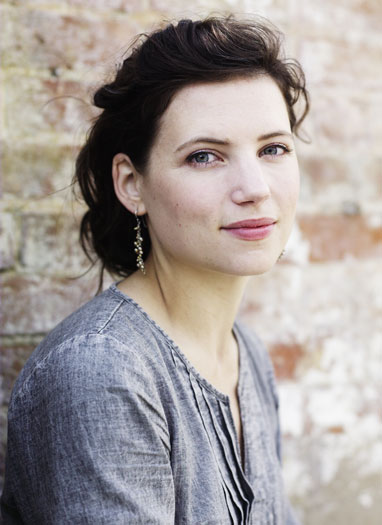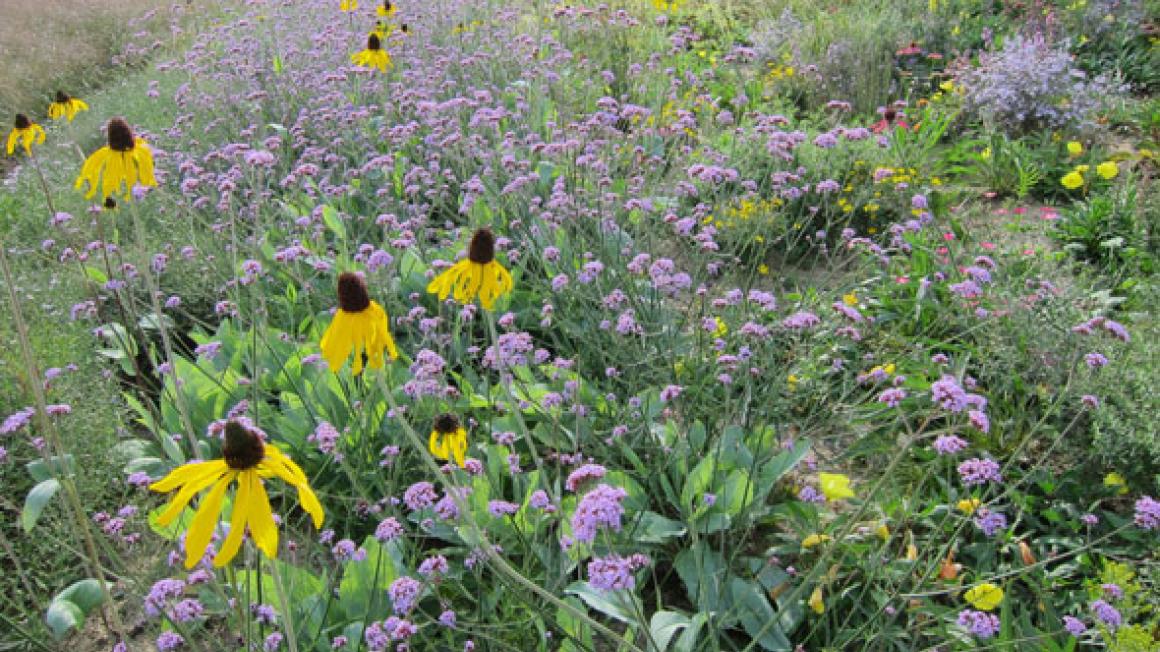Maid in Chelsea
The front of the garden is a stylised perennial meadow, with wild-looking perennials and meadow species, loose and naturalistic, and quite romantic in feel.’ Sarah Price is describing her first full-size show garden for the RHS Chelsea Flower Show next week. Only 31, she is a rising star in the garden design world, with a gold medal for her conceptual garden at the Hampton Court Palace Flower Show in 2006, and two consecutive silvers at Chelsea. She is a co-designer of the half-mile of spectacular perennial planting in the London Olympic Park, and has recently become the Horticultural Adviser at the Garden Museum in London.
She grew up in Claygate, Surrey, the fourth of five children. She was an observant child for whom drawing was a way of looking at and learning about plants. She spent time with her father on his allotment. ‘It was a messy but peaceful place, overgrown, with a bit of scrub and trees and woodland.’ Helping her father was a way of having one-to-one time with him – ‘I was the only one who did that’.
There were also walking holidays in wild places and visits to her paternal grandparents in Meryswydden, in Abergavenny. Her grandmother was a talented gardener in the Beth Chatto school, with an instinct for the right plant in the right place. Her garden opened under The National Gardens Scheme and was featured on television. Sarah and her siblings and cousins ran wild in this ‘irresistibly enchanting’ garden. ‘Sometimes our freedom was checked: on Yellow Book days I was allowed to help make the teas, but was instructed to stay out of sight.’
When Sarah was at Nottingham Trent University, she spent holidays helping in this inspiring garden. After her grandmother’s death, she read her gardening books and found herself absorbed by plants and the special nature of places. She graduated with a first in fine art, but dithered about a career as a painter. A job as a gardener at Hampton Court Palace provided chances for learning through doing and researching, and she embarked on her ‘journey of enquiry’ as a garden designer. ‘A fine-art training develops a way of thinking, an all-rounded understanding of composition.’
She knew early on in the design process for her garden at Chelsea this year what atmosphere she wanted to create. Her experimental use of meadow and wildflower plants she describes as ‘like a new world that’s opening up. A plant can be flowering one day, and not the next – it’s very magical. Even in the staged context of Chelsea it makes one think back to where one might have seen it on a road verge, or in a meadow.’ Because the wildflowers are so ephemeral, they need to be tied in with more common garden perennials. She wants people to have an emotive response, ‘touching something quite deep in our psyche’.

Her inspiration comes from the drifts and repetition of plant distribution in nature, and also from the heemparks (home parks) of the Netherlands created in the 1920s and 1930s in response to the intensification of agriculture and the disappearance of native flora. These parks, she says, ‘look completely natural, but are gardened. I knew that was the atmosphere I was aspiring towards – grasses and rushes in drifts, and tight inflorescences against dark, spikier accents and pinpricks of colour. A tapestry effect was what I was trying to achieve.’
The Chelsea show garden, she says, has a very simple structure. It is a long, thin plot on Main Avenue. The first third is a stylised perennial meadow, the middle section an abstract composition of stone and water with marginal planting. Two copper frames act as a framing device, like old-fashioned seaside bathing pools, where a narrow strip of concrete just separates them from the sea. Sarah chose copper because the Chilmark limestone she is using – a pale but warm building stone used for Salisbury Cathedral, which will be sawn in places and natural in others – has a copper patination on its natural face. Water enters the site in the middle section through an opening in a copper water tower. The final third is a densely planted glade of silver birches. She wanted trees with character that she can position as a community. She had to go to Germany – in English nurseries, she says, birches tend to be grown in rows and have a controlled look.
In her planting, Sarah Price aims for a see-through structure and a lightness of touch. ‘I don’t like divisions between plantings. I try to grade, not from front to back, but with visual links through a scheme, with a play on repetition and difference.’ Crocus, which supplies plants for many Chelsea show gardens, has grown thousands of plants for her. Even in heated polytunnels they have been held back by lack of warmth and sun. They will be delivered six days before Chelsea opens – most designers get their plants five days in advance. Sarah expects the weather to be a problem, but she has a fantastic team behind her. ‘I do always crave a creative challenge, so I am experimental. It’s quite a risk, but Chelsea’s only up for a week – it’s a context in which you should experiment.’ But, she admits, she is still a bit terrified.
RHS Chelsea Flower Show, 22 to 26 May: www.rhs.org.uk
Sarah’s key plants for Chelsea this year
Betula pendula – silver birch
Osmunda regalis – royal fern
Dactylorhiza fuchsii – common spotted orchid
Briza media – quaking grass
Iris pseudacorus – yellow flag iris
Luzula nivea – snowy woodrush
Lychnis flos-cuculi – ragged robin
Caltha palustris – marsh marigold
Thalictrum aquilegifolium ‘Album’ – greater meadow rue
Anthriscus sylvestris – cow parsley/Queen Anne’s lace
Valeriana officinalis – common valerian
Filipendula ulmaria – meadowsweet
Photography: Andrew Montgomery; Gap Photos


